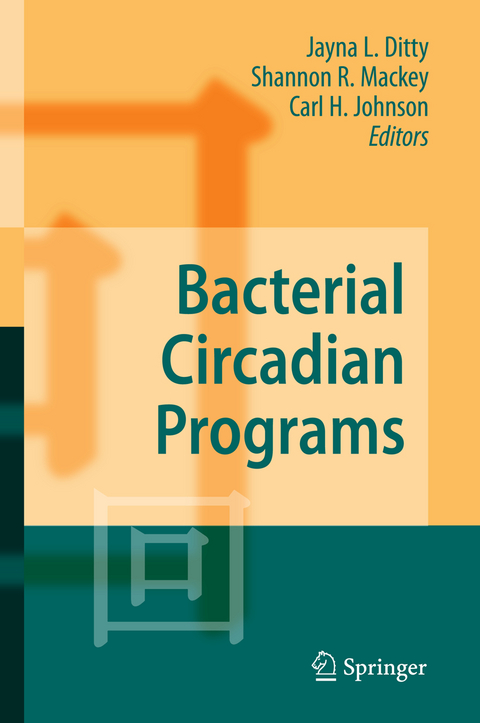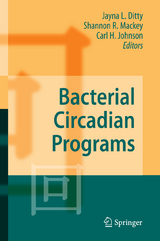Bacterial Circadian Programs
Springer Berlin (Verlag)
978-3-540-88430-9 (ISBN)
Since the discovery of circadian rhythms in cyanobacteria in the late 1980s, the field has exploded with new information. The cyanobacterial model system for studying circadian rhythms, "Synechococcus elongatus", has allowed a detailed genetic dissection of the bacterial clock due to the methods currently available in molecular, structural, and evolutionary biology.
This book addresses multiple aspects of bacterial circadian programs: the history and background of the cyanobacteria and circadian rhythms in microorganisms, the molecular basis, structure, and evolution of the circadian clock, entrainment of the oscillator with the environment and the control of downstream processes by the clock, the demonstration of adaptive significance and the prokaryotic clock's remarkable stability, and mathematical and synthetic oscillator models for clock function.
Experts in the field provide a timely and comprehensive review and a stepping-stone for future work on this amazing group of microorganisms and timing.
Classic Circadian Characteristics: Historical Perspective and Properties Relative to the Synechococcus elongatus PCC 7942 Model.- Speculation and Hoopla: Is Diversity Expected in Cyanobacterial Circadian Timing Systems?.- Circadian Rhythm of Cyanothece RF-1(Synechococcus RF-1).- The Decade of Discovery: How Synechococcus elongatus Became a Model Circadian System 1990-2000.- The Kai Oscillator.- NMR Studies of a Timekeeping System.- Structural Aspects of the Cyanobacterial KaiABC Circadian Clock.- Mechanisms for Entraining the Cyanobacterial Circadian Clock System with the Environment.- Factors Involved in Transcriptional Output from the Kai-Protein-Based Circadian Oscillator.- Chromosome Compaction: Output and Phase.- Cell Division Cycles and Circadian Rhythms.- The Adaptive Value of the Circadian Clock System in Cyanobacteria.- Stability and Noise in the Cyanobacterial Circadian Clock.- The Circadian Clock Gear in Cyanobacteria: Assembled by Evolution.- Circadian Clocks of Synechocystis sp. Strain PCC 6803, Thermosynechococcus elongatus, Prochlorococcus spp., Trichodesmium spp. and Other Species.- Mathematical Modeling of the In Vitro Cyanobacterial Circadian Oscillator.- A Synthetic Biology Approach to Understanding Biological Oscillations: Developing a Genetic Oscillator for Escherichia coli.
| Erscheint lt. Verlag | 10.2.2009 |
|---|---|
| Zusatzinfo | XI, 333 p. |
| Verlagsort | Berlin |
| Sprache | englisch |
| Maße | 155 x 235 mm |
| Gewicht | 596 g |
| Themenwelt | Naturwissenschaften ► Biologie ► Mikrobiologie / Immunologie |
| Schlagworte | circadian clock, molecular structure • circadiane Rhythmen • circadiane Uhr, molekulare Struktur • circadian rhythms • cyanobacteria • Cyanobakterien • Escherichia coli • Evolution • Mathematical Modelling • Mathematische Modellierung • Molecular basis |
| ISBN-10 | 3-540-88430-0 / 3540884300 |
| ISBN-13 | 978-3-540-88430-9 / 9783540884309 |
| Zustand | Neuware |
| Haben Sie eine Frage zum Produkt? |
aus dem Bereich




